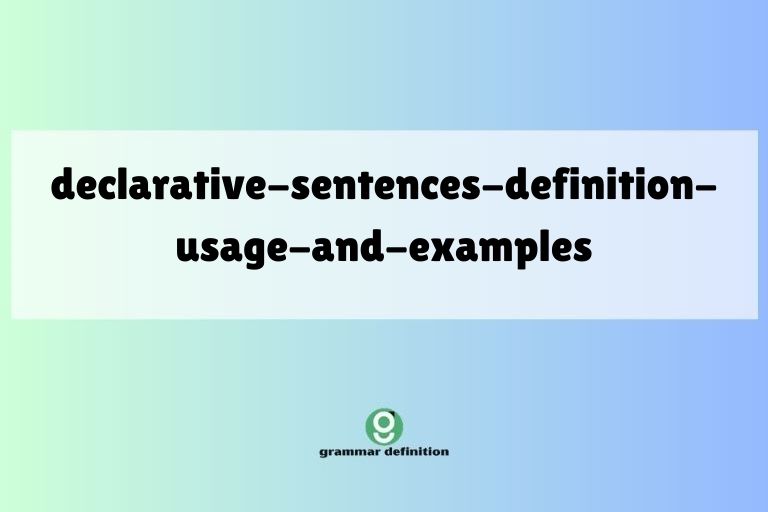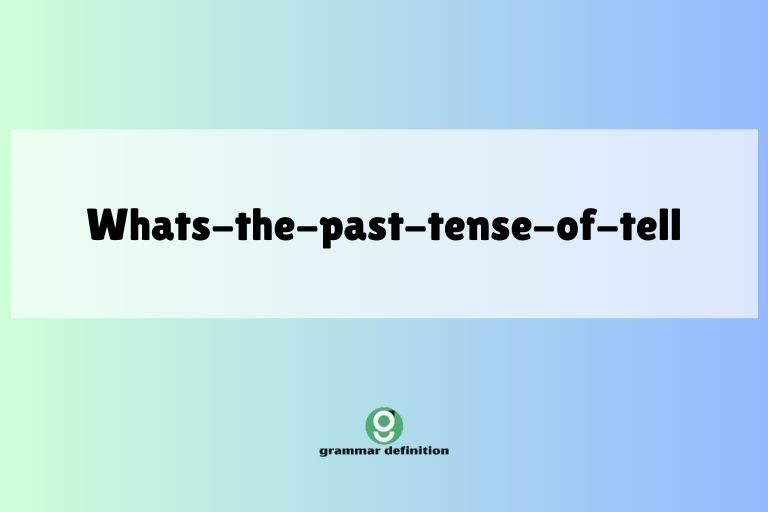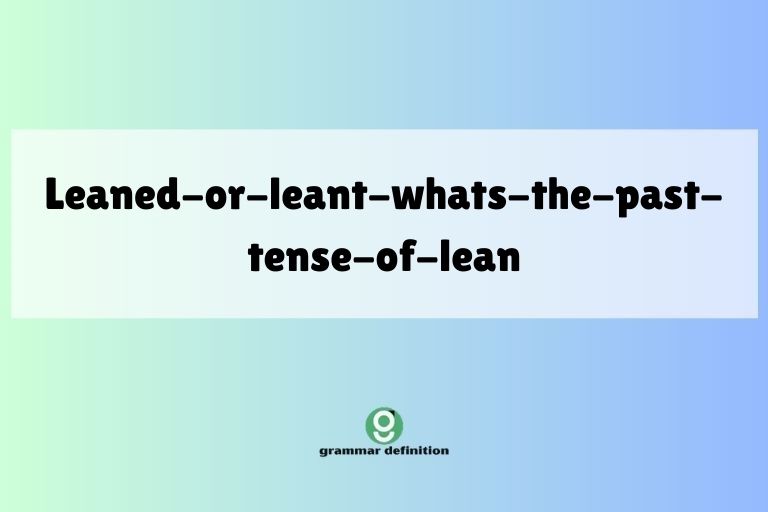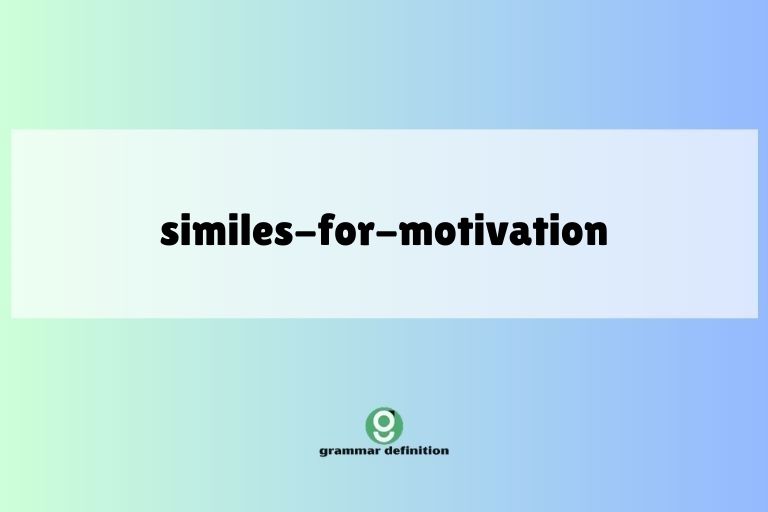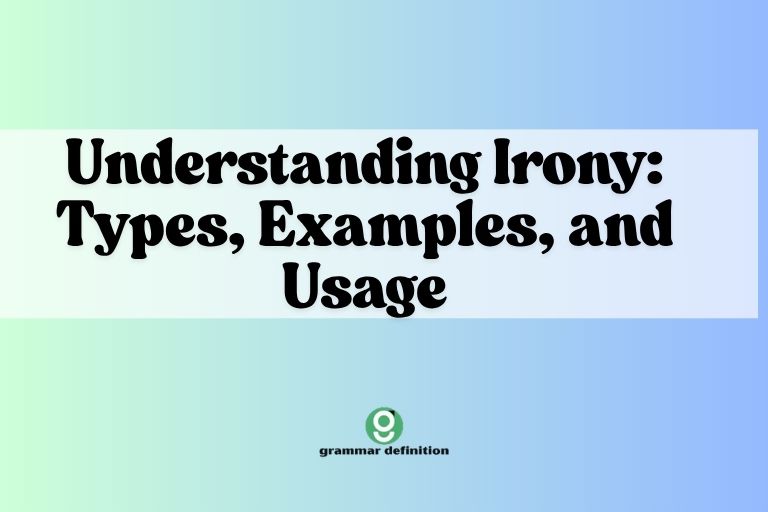Mastering the Past Continuous: Definition, Usage, and Examples
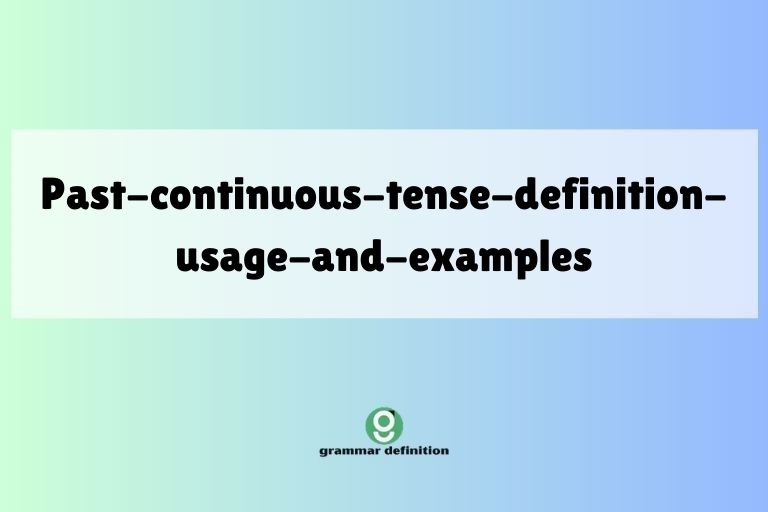
The past continuous tense is a fundamental aspect of English grammar, allowing us to describe actions that were in progress at a specific time in the past or to set the scene in a narrative. A solid understanding of this tense is crucial for effective communication, enabling you to express nuances of time and duration accurately.
This article provides a comprehensive guide to the past continuous tense, covering its definition, structure, usage, common mistakes, and practice exercises. Whether you’re a beginner or an advanced learner, this resource will help you master the past continuous and enhance your overall English proficiency.
This guide is designed for English language learners of all levels, from beginners seeking a foundational understanding to advanced speakers looking to refine their grammar skills. Native English speakers may also find this article useful for clarifying specific points or reinforcing their knowledge of the past continuous tense.
Table of Contents
- Definition of the Past Continuous Tense
- Structural Breakdown of the Past Continuous
- Types of Past Continuous Sentences
- Examples of the Past Continuous Tense
- Usage Rules of the Past Continuous
- Common Mistakes with the Past Continuous
- Practice Exercises
- Advanced Topics in Past Continuous
- Frequently Asked Questions (FAQ)
- Conclusion
Definition of the Past Continuous Tense
The past continuous tense, also known as the past progressive tense, is used to describe actions or events that were in progress at a specific time in the past. It indicates that an action started before a certain point in the past and continued up to that point, and possibly beyond.
It emphasizes the duration of the action rather than its completion.
The function of the past continuous is to provide background information, describe ongoing activities, or express interrupted actions in the past. It’s particularly useful for setting the scene in stories or describing simultaneous events.
The past continuous tense can be used in various contexts, including:
- Describing an action in progress at a specific time in the past.
- Setting the scene in a story or narrative.
- Expressing an interrupted action.
- Indicating simultaneous actions in the past.
- Expressing annoyance or criticism about repeated actions in the past.
Structural Breakdown of the Past Continuous
The structure of the past continuous tense is relatively straightforward. It consists of two main components: the past tense of the verb “to be” (was or were) and the present participle of the main verb (the base form of the verb + -ing).
The basic formula is:
Subject + was/were + verb-ing
Here’s a breakdown of the components:
- Subject: The person or thing performing the action (e.g., I, you, he, she, it, we, they).
- Was/Were: The past tense form of the verb “to be.” “Was” is used with singular subjects (I, he, she, it), while “were” is used with plural subjects (you, we, they) and the singular “you.”
- Verb-ing: The present participle of the main verb, formed by adding “-ing” to the base form of the verb (e.g., playing, eating, studying).
Examples:
- I was reading a book.
- You were watching TV.
- He was playing the guitar.
- She was cooking dinner.
- It was raining heavily.
- We were studying for the exam.
- They were talking loudly.
Negative Form: To form the negative past continuous, add “not” after “was” or “were.”
Subject + was/were + not + verb-ing
Examples:
- I was not reading a book.
- You were not watching TV.
- He was not playing the guitar.
- She was not cooking dinner.
- It was not raining heavily.
- We were not studying for the exam.
- They were not talking loudly.
Contractions are common: was not = wasn’t, were not = weren’t.
Interrogative Form: To form a question in the past continuous, invert the subject and “was/were.”
Was/Were + subject + verb-ing?
Examples:
- Was I reading a book?
- Were you watching TV?
- Was he playing the guitar?
- Was she cooking dinner?
- Was it raining heavily?
- Were we studying for the exam?
- Were they talking loudly?
Types of Past Continuous Sentences
The past continuous tense can be used in different types of sentences to convey various meanings. Here are some common types:
1. Describing an Action in Progress at a Specific Time
This is the most common use of the past continuous. It indicates that an action was ongoing at a particular point in the past.
Example: At 7 pm last night, I was eating dinner.
2. Setting the Scene
The past continuous is often used to set the scene in a story or narrative, providing background information about what was happening.
Example: The birds were singing, the sun was shining, and a gentle breeze was blowing.
3. Expressing an Interrupted Action
The past continuous can be used to describe an action that was in progress when another action interrupted it. The interrupting action is usually in the simple past tense.
Example: I was watching TV when the phone rang.
4. Indicating Simultaneous Actions
The past continuous can describe two or more actions that were happening at the same time in the past.
Example: While I was studying, my brother was playing video games.
5. Expressing Annoyance or Criticism
When used with adverbs like “always” or “constantly,” the past continuous can express annoyance or criticism about a repeated action in the past.
Example: He was always complaining about something.
Examples of the Past Continuous Tense
Here are several tables with examples of the past continuous tense in different contexts. The tables include affirmative, negative, and interrogative forms.
Table 1: Actions in Progress at a Specific Time
This table provides examples of actions that were ongoing at a particular time in the past. Notice how the past continuous emphasizes the duration of the action.
| Subject | Affirmative | Negative | Interrogative |
|---|---|---|---|
| I | I was working at 9 am yesterday. | I wasn’t working at midnight. | Was I working too hard? |
| You | You were sleeping soundly. | You weren’t sleeping when I called. | Were you sleeping well? |
| He | He was playing football. | He wasn’t playing video games. | Was he playing outside? |
| She | She was reading a novel. | She wasn’t reading a magazine. | Was she reading aloud? |
| It | It was raining all day. | It wasn’t raining in the morning. | Was it raining heavily? |
| We | We were eating dinner. | We weren’t eating lunch. | Were we eating healthy food? |
| They | They were talking loudly. | They weren’t talking quietly. | Were they talking about me? |
| The dog | The dog was barking at the mailman. | The dog wasn’t barking at the cat. | Was the dog barking all night? |
| The students | The students were studying in the library. | The students weren’t studying in the cafeteria. | Were the students studying diligently? |
| My mother | My mother was cooking a delicious meal. | My mother wasn’t cooking when I arrived. | Was my mother cooking my favorite dish? |
| The children | The children were playing in the park. | The children weren’t playing inside the house. | Were the children playing quietly? |
| The band | The band was playing live music. | The band wasn’t playing recorded music. | Was the band playing our song? |
| The actor | The actor was performing on stage. | The actor wasn’t performing the rehearsal. | Was the actor performing well? |
| The artist | The artist was painting a beautiful landscape. | The artist wasn’t painting abstract art. | Was the artist painting from life? |
| The chef | The chef was preparing a gourmet dish. | The chef wasn’t preparing fast food. | Was the chef preparing the special order? |
| The pilot | The pilot was flying the plane smoothly. | The pilot wasn’t flying recklessly. | Was the pilot flying on autopilot? |
| The engineer | The engineer was designing a new bridge. | The engineer wasn’t designing a house. | Was the engineer designing the prototype? |
| The writer | The writer was writing a compelling story. | The writer wasn’t writing a poem. | Was the writer writing the sequel? |
| The dancer | The dancer was practicing her routine. | The dancer wasn’t practicing improvisation. | Was the dancer practicing for the gala? |
| The manager | The manager was leading the meeting. | The manager wasn’t leading the workshop. | Was the manager leading effectively? |
Table 2: Setting the Scene
This table illustrates how the past continuous can be used to create a vivid picture of the past, setting the atmosphere and providing background details.
| Sentence | Description |
|---|---|
| The wind was howling, and the rain was lashing against the windows. | Describes stormy weather conditions. |
| The children were laughing and playing in the garden. | Paints a picture of a joyful scene. |
| The music was playing softly, and people were dancing slowly. | Creates a romantic and relaxed atmosphere. |
| The traffic was moving slowly, and everyone was waiting patiently. | Depicts a scene of congestion and anticipation. |
| The chef was preparing the meal, and the waiters were setting the tables. | Shows the activity in a restaurant kitchen. |
| The sun was setting, and the sky was turning orange and pink. | Describes a beautiful sunset. |
| The crowd was cheering, and the athletes were running around the track. | Illustrates the excitement of a sporting event. |
| The waves were crashing against the shore, and the seagulls were flying overhead. | Creates a scene of a rugged coastline. |
| The snow was falling gently, and the world was turning white. | Depicts a peaceful winter scene. |
| The fire was crackling in the fireplace, and we were roasting marshmallows. | Describes a cozy and warm atmosphere. |
| The clock was ticking loudly, and the students were concentrating on their exams. | Paints a picture of a tense exam room. |
| The leaves were rustling in the trees, and the birds were chirping in the branches. | Creates a serene natural setting. |
| The stars were twinkling in the sky, and the moon was shining brightly. | Describes a beautiful night sky. |
| The train was speeding through the countryside, and the passengers were gazing out the windows. | Illustrates a journey by train. |
| The bees were buzzing around the flowers, and the gardener was tending to the plants. | Depicts a busy and vibrant garden. |
| The protesters were chanting slogans, and the police were monitoring the situation. | Shows a scene of social unrest. |
| The musicians were tuning their instruments, and the audience was waiting in anticipation. | Describes the moments before a concert. |
| The children were building a sandcastle, and the parents were watching from the beach. | Illustrates a family day at the beach. |
| The chef was plating the dishes, and the servers were delivering them to the tables. | Shows the final preparations in a restaurant kitchen. |
| The dancers were rehearsing their steps, and the choreographer was giving instructions. | Depicts a dance rehearsal. |
Table 3: Interrupted Actions
This table shows how the past continuous is used to describe an action that was interrupted by another action, which is typically in the simple past tense.
| Sentence | Explanation |
|---|---|
| I was cooking dinner when the power went out. | The action of cooking was interrupted by the power outage. |
| She was walking to work when she saw an accident. | Her walk was interrupted by witnessing the accident. |
| They were playing football when it started to rain. | Their game was interrupted by the rain. |
| He was studying in the library when he received a phone call. | His studying was interrupted by the phone call. |
| We were watching a movie when the doorbell rang. | The movie was interrupted by the doorbell. |
| The cat was sleeping on the sofa when the dog jumped on it. | The cat’s nap was interrupted by the dog. |
| I was listening to music when I heard a strange noise. | Listening to music was interrupted by the strange noise. |
| She was writing an email when her computer crashed. | Writing the email was interrupted by the computer crash. |
| They were having a picnic when a swarm of bees appeared. | Their picnic was interrupted by the bees. |
| He was driving home when he got a flat tire. | His drive was interrupted by the flat tire. |
| I was dreaming about winning the lottery when the alarm clock went off. | The dream was interrupted by the alarm. |
| She was painting a portrait when her phone started ringing. | The painting was interrupted by the phone. |
| They were building a treehouse when their parents called them for dinner. | The treehouse building was interrupted by dinner. |
| He was practicing the piano when his sister started singing loudly. | The piano practice was interrupted by the singing. |
| We were planning the vacation when we realized we had run out of money. | The vacation planning was interrupted by the realization. |
| The bird was flying south for the winter when it encountered a storm. | The bird’s flight was interrupted by the storm. |
| I was reading a fascinating book when I fell asleep. | The reading was interrupted by sleep. |
| She was cooking a gourmet meal when she burned the sauce. | The cooking was interrupted by the burnt sauce. |
| They were hiking in the mountains when they got lost. | The hiking was interrupted by getting lost. |
| He was giving a presentation when the projector stopped working. | The presentation was interrupted by the projector malfunction. |
Table 4: Simultaneous Actions
This table demonstrates how the past continuous can describe two or more actions that were occurring at the same time in the past.
| Sentence | Explanation |
|---|---|
| While I was studying, my roommate was listening to music. | Two actions happening at the same time. |
| She was cooking dinner while he was washing the dishes. | Two actions happening simultaneously in the kitchen. |
| They were playing video games while their parents were watching TV. | Different activities happening at the same time. |
| As the sun was setting, the birds were flying back to their nests. | Two natural events occurring simultaneously. |
| While the teacher was explaining the lesson, the students were taking notes. | Actions happening concurrently in the classroom. |
| I was working on my computer while my cat was sleeping on my lap. | Two actions happening in the same space. |
| She was practicing the violin while her brother was playing the drums. | Musical activities happening at the same time. |
| They were building a sandcastle while the tide was coming in. | Actions happening against the backdrop of a natural event. |
| He was reading a book while his wife was knitting a sweater. | Quiet activities happening together. |
| We were driving to the beach while the children were singing in the back seat. | A journey with simultaneous activities. |
| While the chef was preparing the main course, the sous chef was making the salad. | Two culinary tasks happening in parallel. |
| She was writing a novel while also teaching English online. | Balancing two different professional activities. |
| They were renovating their house while also working full-time jobs. | Juggling personal and professional responsibilities. |
| He was training for a marathon while simultaneously studying for his exams. | Combining physical and academic pursuits. |
| We were learning Spanish while also traveling through South America. | Immersive learning combined with travel. |
| The artist was painting a mural while volunteers were helping with the background. | A collaborative artistic endeavor. |
| The director was filming the scene while the crew was adjusting the lights. | Simultaneous tasks on a film set. |
| The scientists were conducting experiments while other researchers were analyzing the data. | Parallel scientific processes. |
| The musicians were improvising a melody while the audience was clapping along. | A dynamic musical performance. |
| The children were playing in the snow while their parents were warming themselves by the fire. | Contrasting activities during winter. |
Usage Rules of the Past Continuous
Here’s a comprehensive overview of the rules governing the proper use of the past continuous tense:
- Describing Actions in Progress: Use the past continuous to describe actions that were ongoing at a specific time in the past. The time can be explicitly stated or implied.
- Setting the Scene: Use the past continuous to provide background information and create a vivid picture of the past.
- Interrupted Actions: Use the past continuous for the longer action and the simple past for the shorter, interrupting action.
- Simultaneous Actions: Use the past continuous for two or more actions that were happening at the same time.
- Annoyance or Criticism: Use the past continuous with adverbs like “always” or “constantly” to express annoyance or criticism.
- Avoid with Stative Verbs: Stative verbs (verbs that describe states, feelings, or opinions) are generally not used in continuous tenses. Use the simple past instead. Examples of stative verbs include: be, have, know, like, love, hate, believe, understand, seem, appear.
Exceptions and Special Cases:
- Some verbs can be both stative and dynamic, depending on the context. In these cases, using the continuous form changes the meaning. For example:
- I was thinking about the problem (dynamic – actively considering).
- I thought it was a good idea (stative – an opinion).
- When describing a temporary state, a stative verb might be used in the continuous form, though this is less common and often more emphatic. For example:
- She was being difficult (implying her behavior was unusual and temporary).
Common Mistakes with the Past Continuous
Here are some common mistakes learners make when using the past continuous tense, along with corrections:
| Incorrect | Correct | Explanation |
|---|---|---|
| I was ate dinner when he called. | I was eating dinner when he called. | The correct form is “was/were + verb-ing.” |
| She were studying yesterday. | She was studying yesterday. | “Was” is used with singular subjects like “she.” |
| They was playing football. | They were playing football. | “Were” is used with plural subjects like “they.” |
| He was knowing the answer. | He knew the answer. | “Know” is a stative verb and is not typically used in continuous tenses. |
| We were liking the movie. | We liked the movie. | “Like” is a stative verb and is not typically used in continuous tenses. |
| While I studied, she was cooking. | While I was studying, she was cooking. | To show simultaneous actions, both verbs should be in the past continuous. |
| I was watch TV when the power went out. | I was watching TV when the power went out. | The correct form is “was/were + verb-ing.” |
| She was not study when I arrived. | She was not studying when I arrived. | The correct negative form is “was/were + not + verb-ing.” |
| Were he play the guitar? | Was he playing the guitar? | The correct interrogative form is “Was/Were + subject + verb-ing?” |
| I was being agree with him. | I agreed with him. | “Agree” is a stative verb. |
| They were always complain. | They were always complaining. | The correct form is “was/were + always + verb-ing.” |
| I was thinking he is right. | I thought he was right. | Here, “think” is a stative verb expressing an opinion. |
| She was having a cold last week. | She had a cold last week. | “Have” (in the sense of possessing or experiencing) is usually stative. |
| We were understanding the lesson now. | We understood the lesson then. | “Understand” is a stative verb. |
| He was seeming tired. | He seemed tired. | “Seem” is a stative verb. |
| It was appearing to be raining. | It appeared to be raining. | “Appear” is a stative verb. |
| I was believe him. | I believed him. | “Believe” is a stative verb. |
| She was wanting to go home. | She wanted to go home. | “Want” is a stative verb. |
| They were needing help. | They needed help. | “Need” is a stative verb. |
| He was preferring coffee over tea. | He preferred coffee over tea. | “Prefer” is a stative verb. |
Practice Exercises
Test your understanding of the past continuous tense with these practice exercises.
Exercise 1: Fill in the Blanks
Complete the following sentences with the past continuous form of the verb in parentheses.
| Question | Answer |
|---|---|
| 1. I ________ (watch) TV when the phone rang. | 1. I was watching TV when the phone rang. |
| 2. She ________ (cook) dinner when I arrived. | 2. She was cooking dinner when I arrived. |
| 3. They ________ (play) football when it started to rain. | 3. They were playing football when it started to rain. |
| 4. He ________ (study) in the library when he met her. | 4. He was studying in the library when he met her. |
| 5. We ________ (eat) lunch when the doorbell rang. | 5. We were eating lunch when the doorbell rang. |
| 6. The cat ________ (sleep) on the sofa when the dog barked. | 6. The cat was sleeping on the sofa when the dog barked. |
| 7. I ________ (listen) to music when I heard a loud noise. | 7. I was listening to music when I heard a loud noise. |
| 8. She ________ (write) an email when the power went out. | 8. She was writing an email when the power went out. |
| 9. They ________ (have) a picnic when it began to rain. | 9. They were having a picnic when it began to rain. |
| 10. He ________ (drive) to work when he saw the accident. | 10. He was driving to work when he saw the accident. |
Exercise 2: Rewrite the Sentences
Rewrite the following sentences using the past continuous tense to describe simultaneous actions.
| Question | Answer |
|---|---|
| 1. I studied, and she cooked. | 1. While I was studying, she was cooking. |
| 2. He worked, and she cleaned. | 2. While he was working, she was cleaning. |
| 3. They played, and we watched. | 3. While they were playing, we were watching. |
| 4. She sang, and he danced. | 4. While she was singing, he was dancing. |
| 5. We ate, and they talked. | 5. While we were eating, they were talking. |
| 6. The sun set, and the birds flew. | 6. As the sun was setting, the birds were flying. |
| 7. The teacher explained, and the students listened. | 7. While the teacher was explaining, the students were listening. |
| 8. I worked, and the cat slept. | 8. While I was working, the cat was sleeping. |
| 9. She practiced, and her brother played. | 9. While she was practicing, her brother was playing. |
| 10. They built, and the tide came. | 10. While they were building, the tide was coming. |
Exercise 3: Correct the Mistakes
Identify and correct the mistakes in the following sentences.
| Question | Answer |
|---|---|
| 1. I was ate dinner when he called. | 1. I was eating dinner when he called. |
| 2. She were studying yesterday. | 2. She was studying yesterday. |
| 3. They was playing football. | 3. They were playing football. |
| 4. He was knowing the
answer. |
4. He knew the answer. |
| 5. We were liking the movie. | 5. We liked the movie. |
Advanced Topics in Past Continuous
Delve deeper into the nuances and complexities of the past continuous tense with these advanced topics:
1. Past Continuous with “Still”
Using “still” with the past continuous emphasizes the continuation of an action over a longer period than expected. It adds a sense of duration and persistence.
2. Combining Past Continuous with Other Tenses
The past continuous can be effectively combined with other tenses to create complex and nuanced descriptions of past events. For instance, combining it with the past perfect can clarify the sequence of events.
3. Expressing Regret or Unfulfilled Intentions
The past continuous can be used to express regret or unfulfilled intentions, often with phrases like “was going to” or “was planning to.”
4. Describing Trends or Developments
The past continuous can describe ongoing trends or developments in the past, indicating a gradual change over time.
5. Using Past Continuous in Formal Writing
In formal writing, the past continuous can add a layer of sophistication and detail to narratives and descriptions. It helps to create a sense of immersion for the reader.
Frequently Asked Questions (FAQ)
When should I use the past continuous tense?
Use the past continuous tense to describe actions in progress at a specific time in the past, to set the scene, to indicate interrupted actions, to describe simultaneous actions, or to express annoyance about repeated actions.
Can I use stative verbs in the past continuous tense?
Generally, no. Stative verbs describe states, feelings, or opinions and are not typically used in continuous tenses.
Use the simple past instead. However, there are exceptions when describing temporary states or changing the meaning of the verb.
What is the difference between the past continuous and the simple past tense?
The past continuous describes actions that were in progress at a specific time, emphasizing the duration of the action. The simple past describes completed actions in the past, focusing on the completion of the action.
How do I form the negative past continuous tense?
To form the negative past continuous tense, use the structure: Subject + was/were + not + verb-ing.
How do I form a question in the past continuous tense?
To form a question in the past continuous tense, invert the subject and “was/were”: Was/Were + subject + verb-ing?
What are some common mistakes to avoid with the past continuous tense?
Common mistakes include using the wrong form of “to be” (was/were), using stative verbs in the continuous form, and not using the correct verb-ing form.
Conclusion
Mastering the past continuous tense is essential for expressing actions that were in progress in the past, setting scenes, and conveying nuanced meanings in English. By understanding its structure, usage rules, and common pitfalls, you can significantly enhance your English proficiency.
Practice the concepts discussed in this article through exercises and real-world application to solidify your understanding. With diligent practice, you’ll be able to use the past continuous tense with confidence and accuracy, enriching your communication skills and enabling you to express yourself more effectively.

